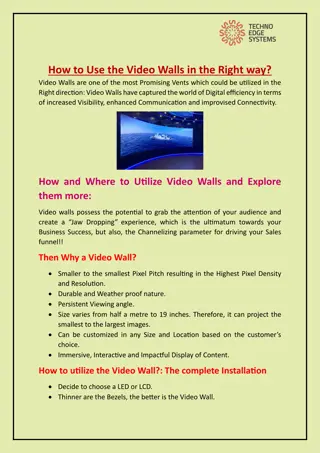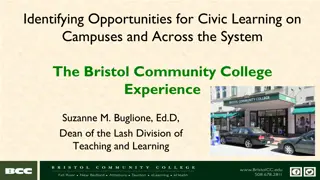Enhancing Community Engagement Through Video-Based Learning in Extractives Projects
Utilizing video-based learning to promote Free, Prior and Informed Consent (FPIC) in extractives projects has shown significant impacts, including addressing specific FPIC challenges, exploring the impacts of mining in various regions, and fostering increased self-advocacy and stronger community relationships. Observations highlight the emotional impact of storytelling through videos and the positive outcomes such as mass education, increased self-advocacy, and improved community-civil society relationships.
Download Presentation

Please find below an Image/Link to download the presentation.
The content on the website is provided AS IS for your information and personal use only. It may not be sold, licensed, or shared on other websites without obtaining consent from the author.If you encounter any issues during the download, it is possible that the publisher has removed the file from their server.
You are allowed to download the files provided on this website for personal or commercial use, subject to the condition that they are used lawfully. All files are the property of their respective owners.
The content on the website is provided AS IS for your information and personal use only. It may not be sold, licensed, or shared on other websites without obtaining consent from the author.
E N D
Presentation Transcript
Video-Based Learning to Promote FPIC in Extractives Projects
Specific FPIC Challenges PRIOR INFORMED Prevention vs. remedy focus in CSOs Remoteness and size of areas to be targeted vs. CSO capacity Lack of community interest, capture Rights Strategies Literacy Information in usable, culturally appropriate form
Beneath the Surface Series Impacts of Mining (DRC, Peru, Zimbabwe) Displacement and CBOs (Zimbabwe) Negotiating the EIA (Bolivia) Community Based Mapping and Unity (Ghana) Baseline Data & Env tl Monitoring (Nigeria) Women s Leadership and Sustaining Resistance (Philippines) Communications and Movement Building (Peru) Water Testing an National Law (Haiti)
Observation 1: Mass Education 11 villages 3.000+ people 6 months 36 transmissions 290.000 people Multi-level advocacy monitoring
Observation 2: Emotional Impact I can tell someone about what a community in Nigeria did to protect their rights, but the video allows that community to tell its own story and this has a much bigger impact. To see the communities and hear them explain what happen in their own words makes it more real. The videos are extremely touching I watched as many of the women and children were touched by this footage during the community screenings. I think this video very convincingly shows the gravity of the negative impacts of mining on the health of women and children.
Observation 3: Increased Self-Advocacy Demand for rights-based information Demand for community-led legal solutions and access to experts Increased claims filed at legal clinic Lobbying local reps and industry Increased public discussion
Observation 4: Stronger Community/Civil Society Relationships The videos really made a big difference with the communities. Normally when we go to speak with them, we have a debate about mining and they are sometimes skeptical. We end the meeting and they say they will think about working with us and we usually don t hear anything from them. But after the screenings of these videos, the communities were convinced. They were ready and eager to plan the next steps with us and particularly motivated to work with experts to do community mapping.























